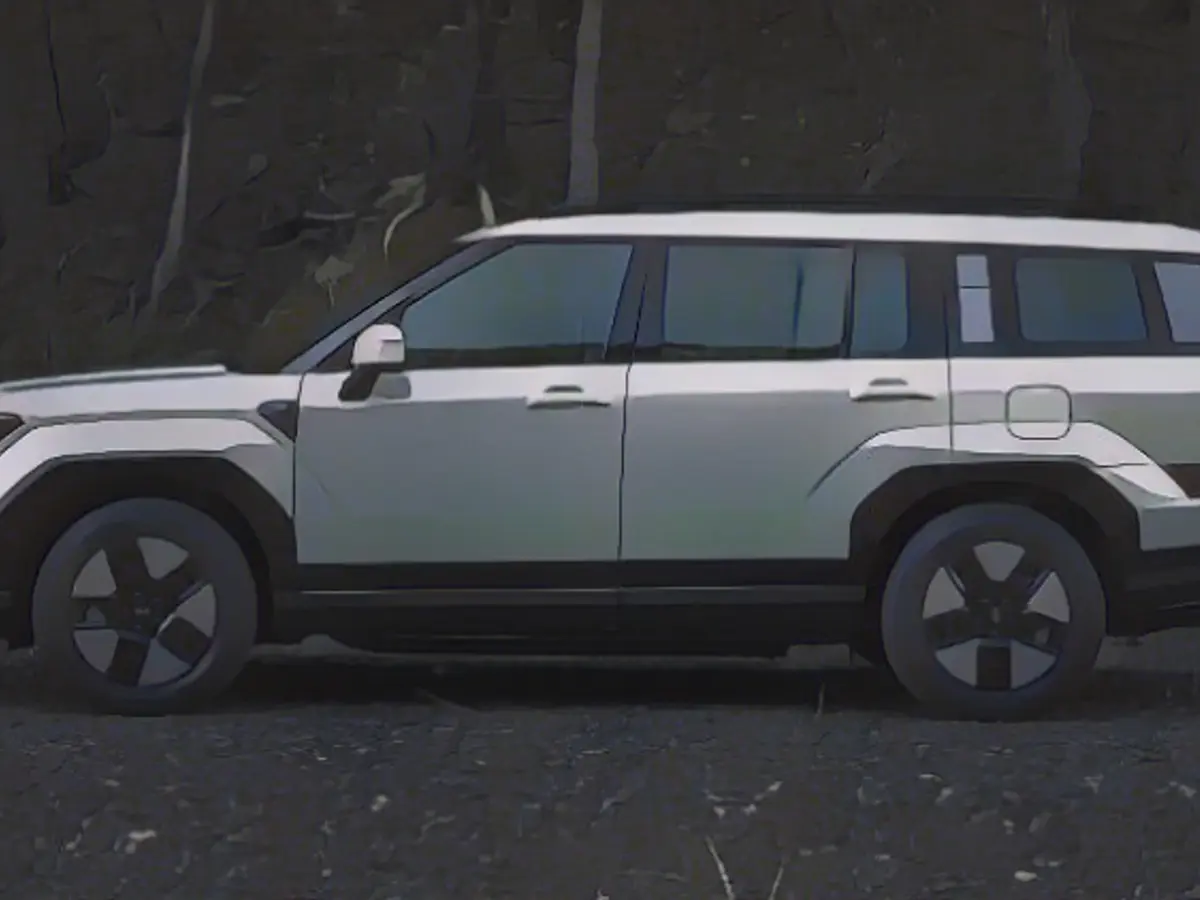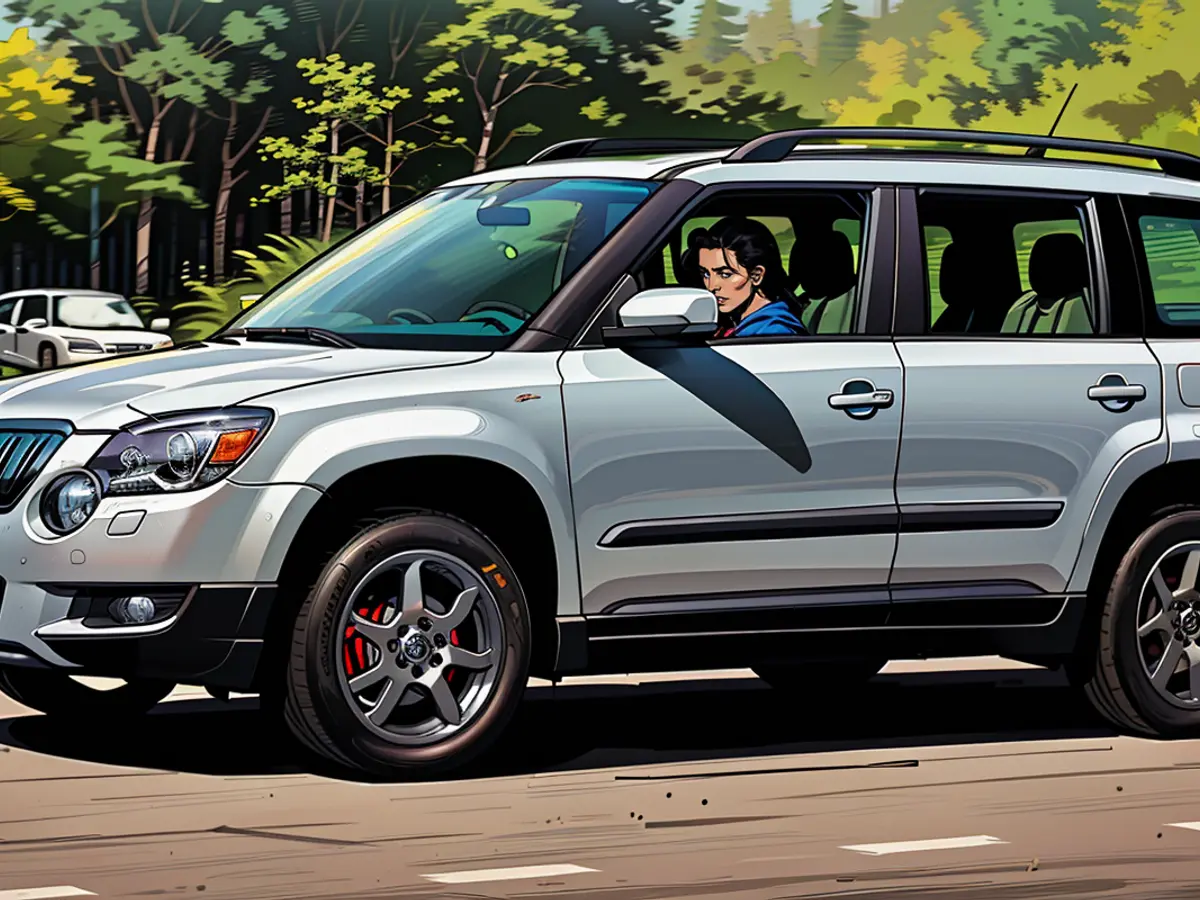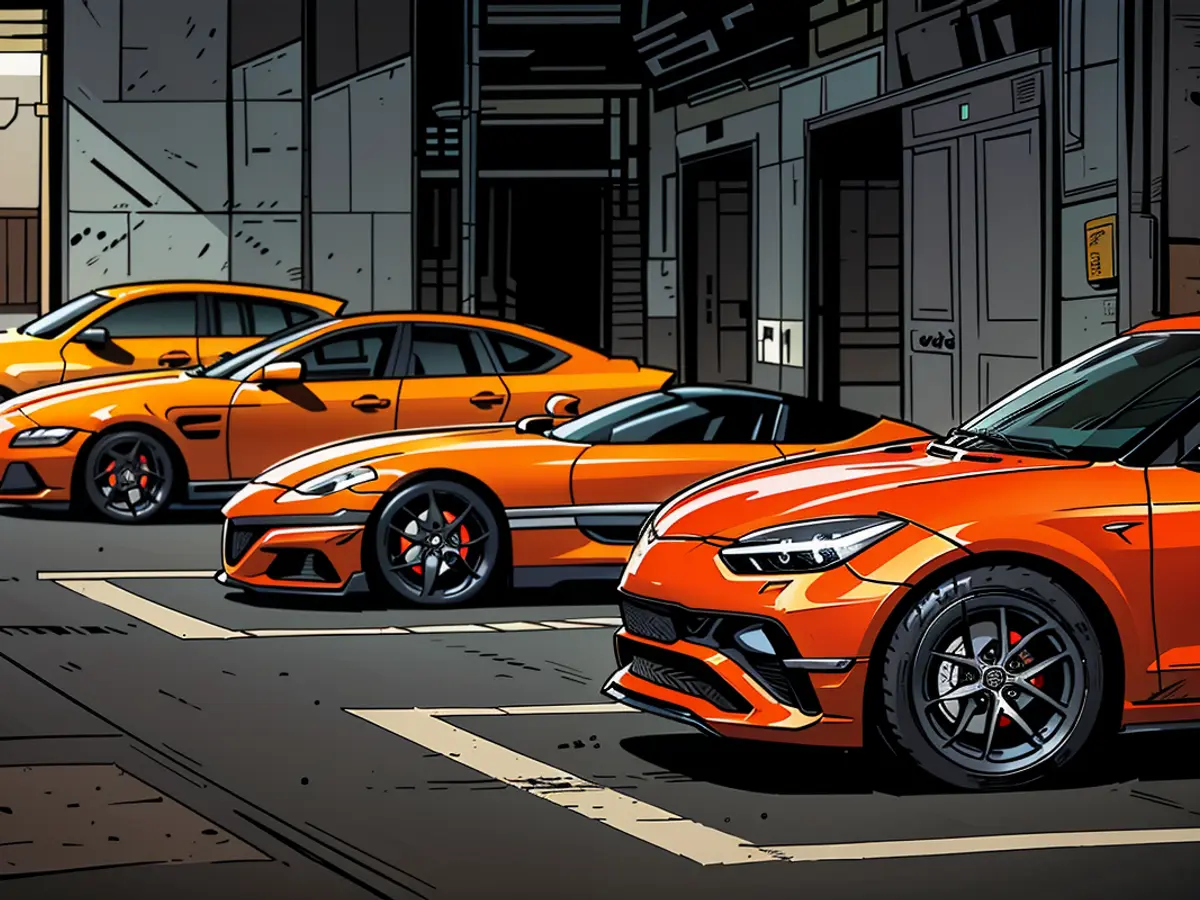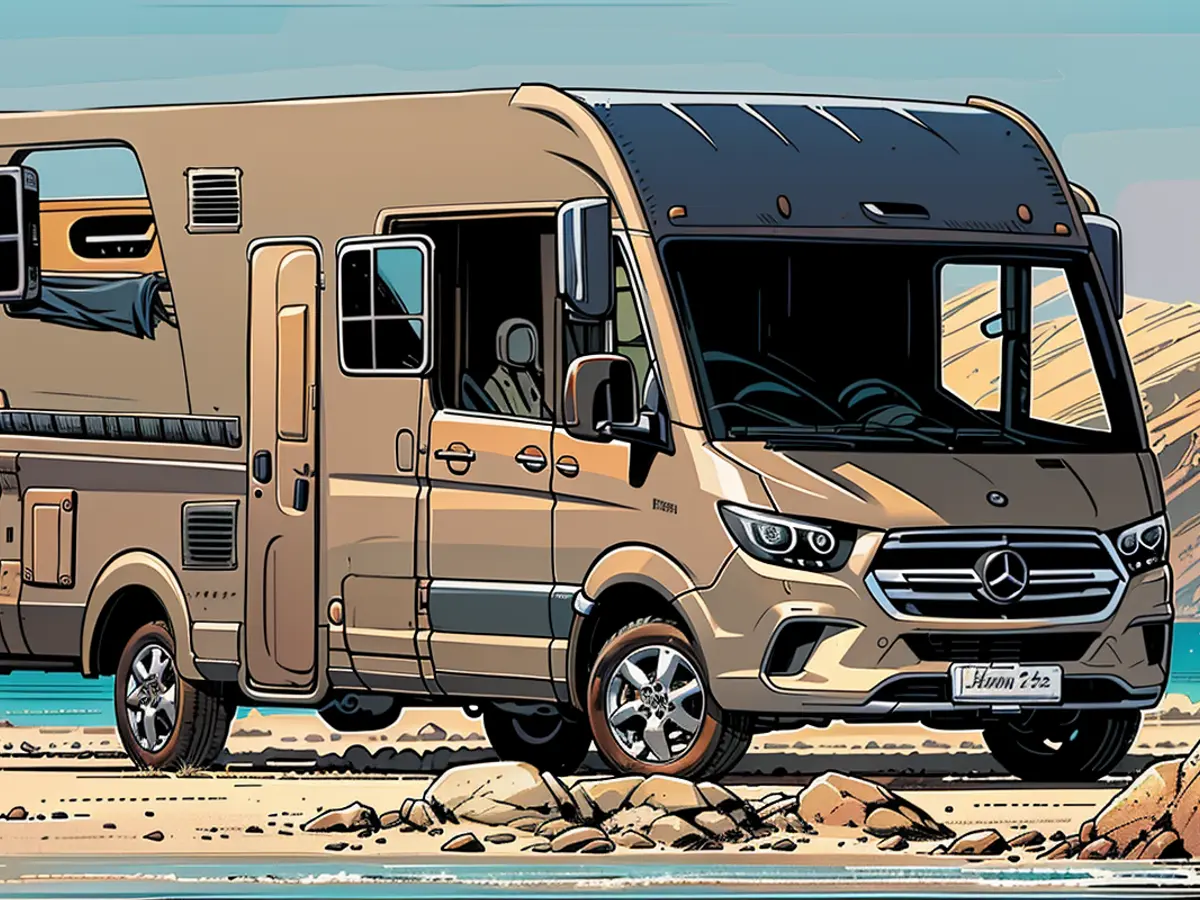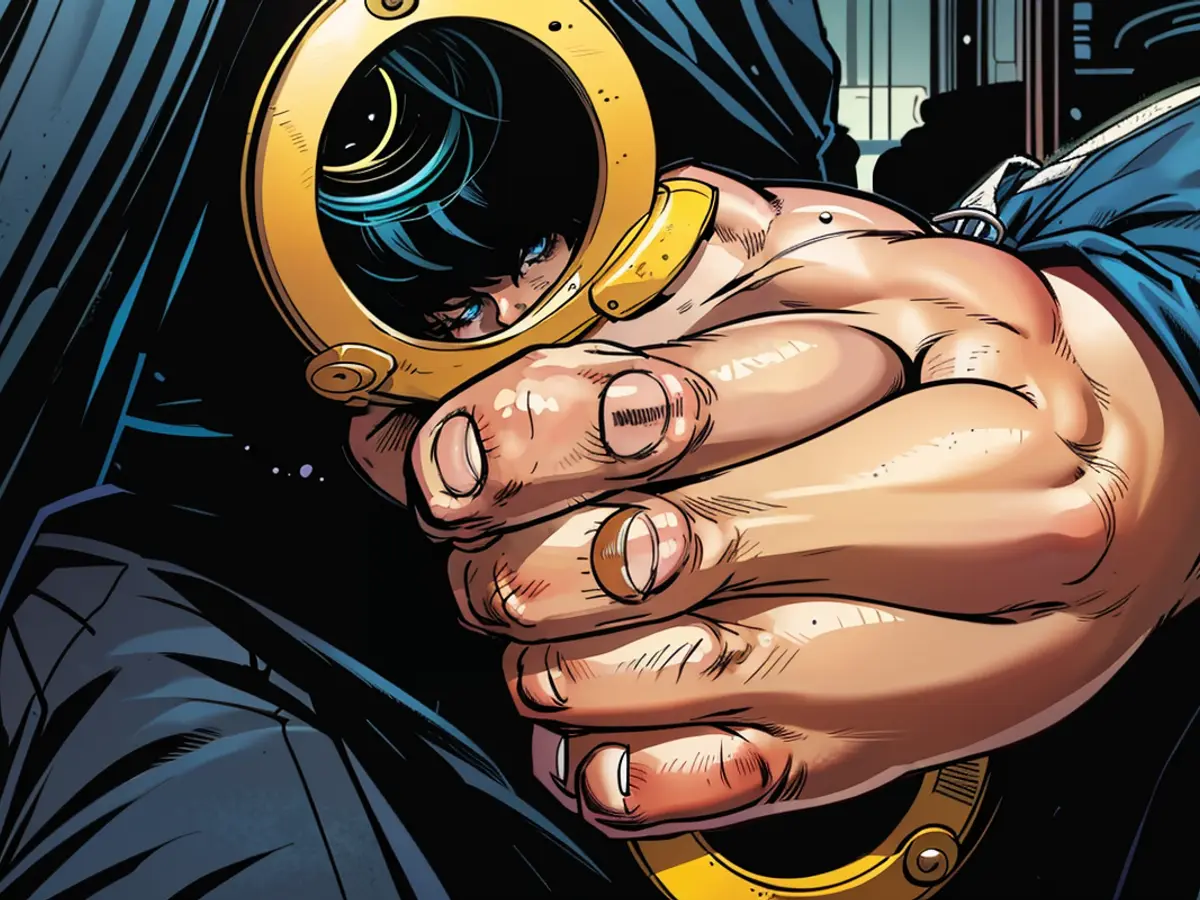New Hyundai Santa Fe SUV with radical design change
With the fifth generation of the Santa Fe, Hyundai is emancipating the model, which has been in production for more than 20 years, from its original style. If there ever was one. ntv.de took a test drive in the optionally quite colorful SUV.
SUVs are also known to do quite well in Germany. So it's no wonder that Hyundai has many of them in its range. Until now, however, the Koreans' high-riding automotive fare has been somewhat pleasing, but not very exciting in design, especially in the case of the Santa Fe, and certainly not consistent since the model series first appeared in 2000. And because visual boredom has long since ceased to suit the group, which now has many top designers, Hyundai is changing this situation with a bang. This comes in the form of the fifth generation of the Santa Fe and should really stick in the minds of those who see it.
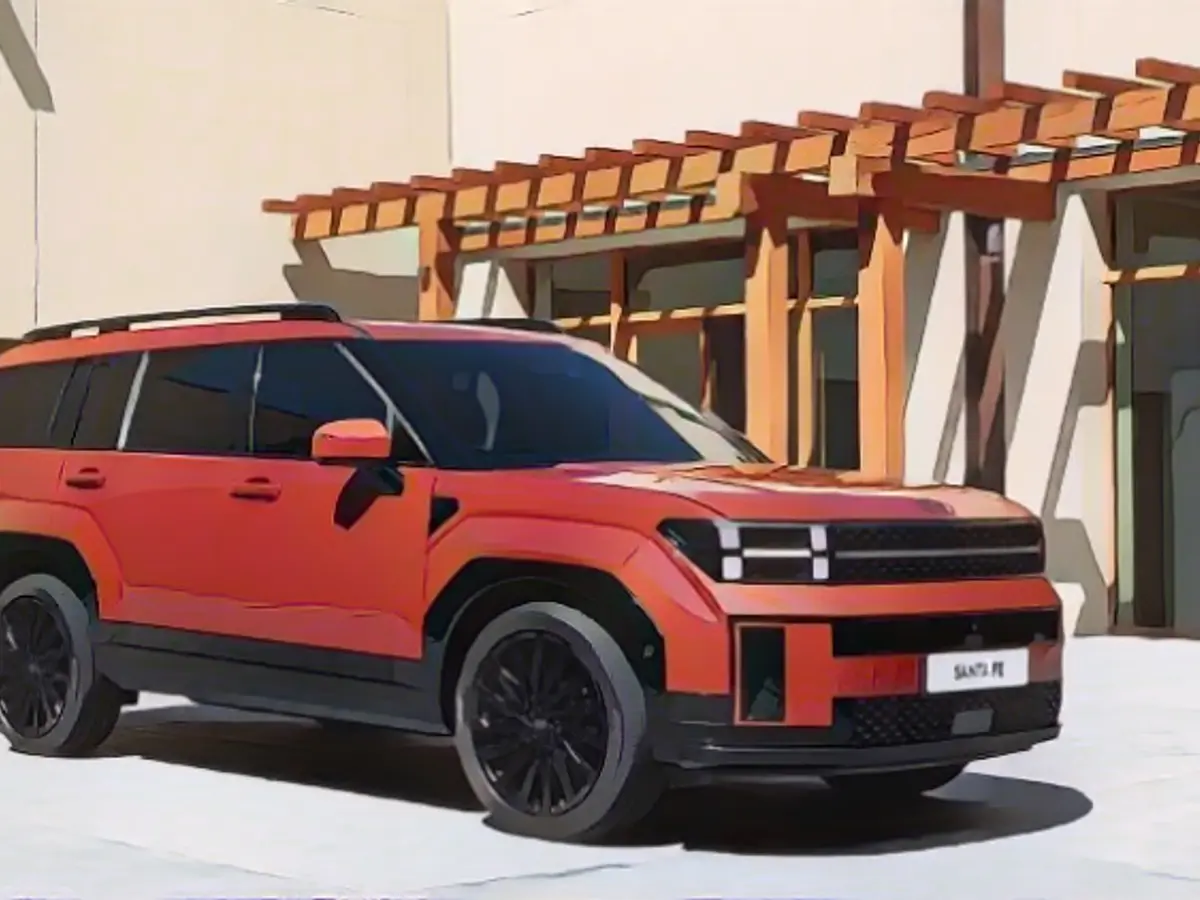
The subtly grown and now 4.83-meter-long multifunctional vehicle is stylish and angular. And a little boyish too, but futuristic at the same time. The latter impression is emphasized by LED lights with a striking "H" signature (which probably stands for Hyundai), which also give the Korean car recognition value. Creative mind SangYup Lee, who has also worked for General Motors and later designed luxury Bentleys, also gave the Santa Fe strikingly flared wheel arches. Together with the effect of the brightest colors (beige, green and orange tones), this definitely makes the Korean an eye-catcher.
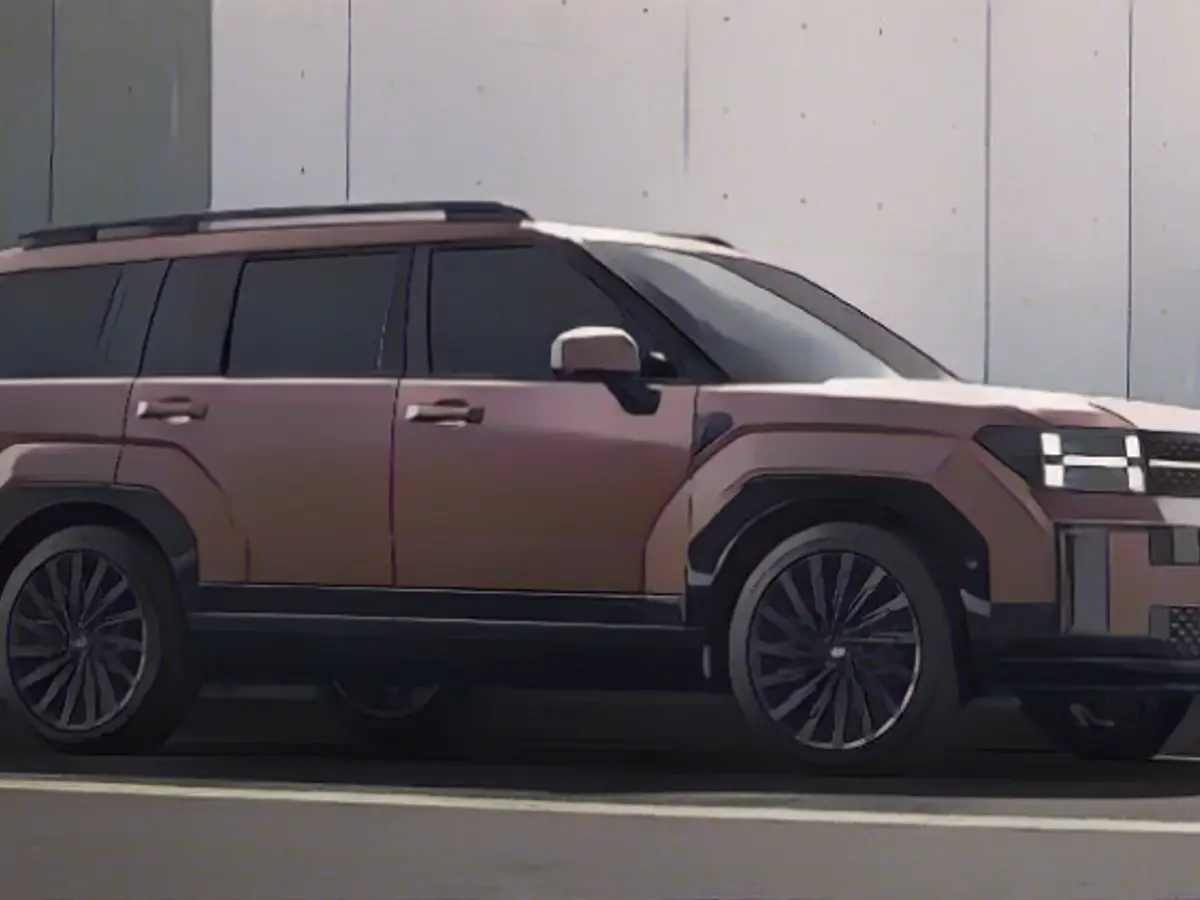
And while the Santa Fe could previously only be experienced statically, Hyundai is now making examples available for various drives for the first time. These early cars are versions with international specifications that differ from the later European and therefore also German variants in various respects.
In Europe with two hybrid variants
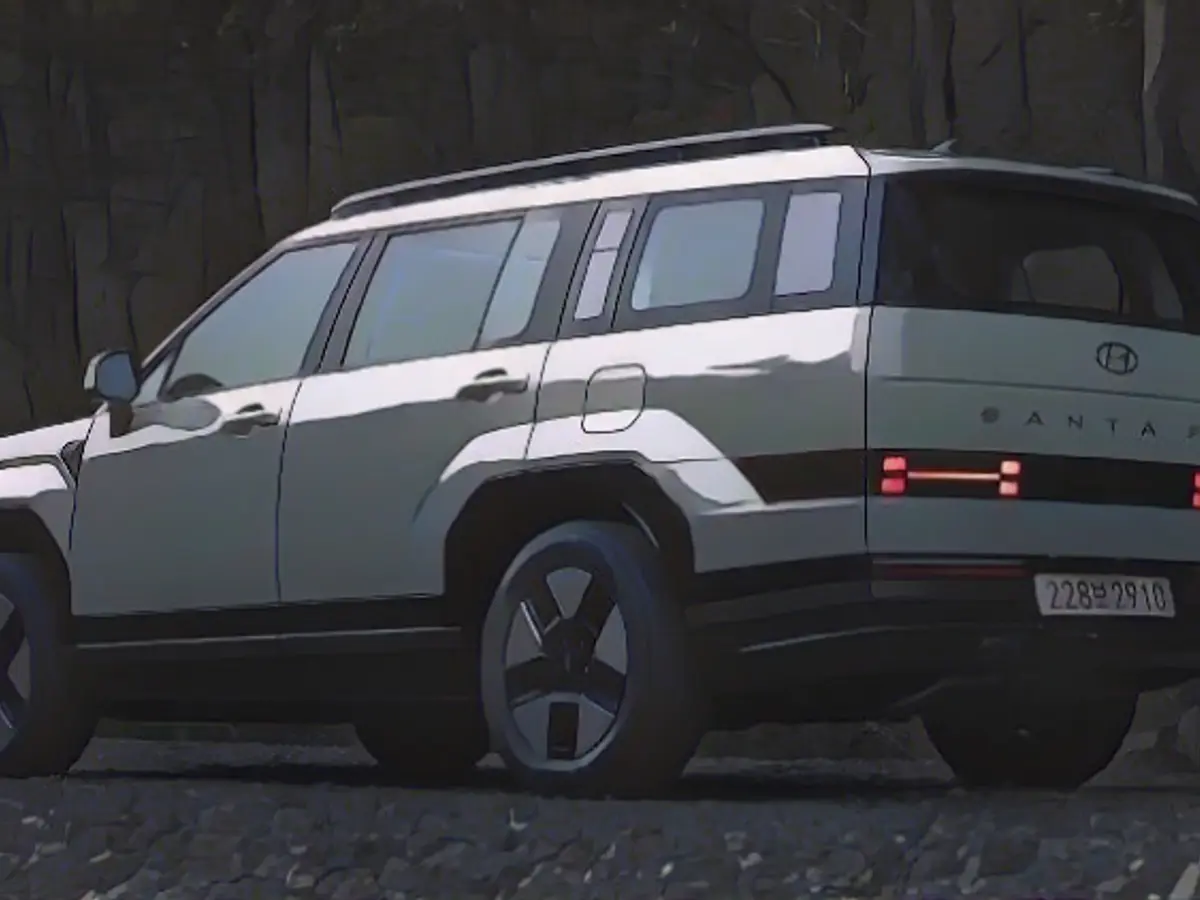
This also applies to the two hybrids (with and without external charging option) - different, albeit only marginally different, data is expected for Europe. However, both always have a six-speed automatic transmission. The full hybrid tested here has 180 combustion engine horsepower combined with 65 electric horses. That's not an exuberant amount of power, but in the end the drivetrain is conceivably superior. Driving performance figures will be provided once the European versions have been homologated. Much more important is how harmoniously the two engines work together - and that is certainly a high level.
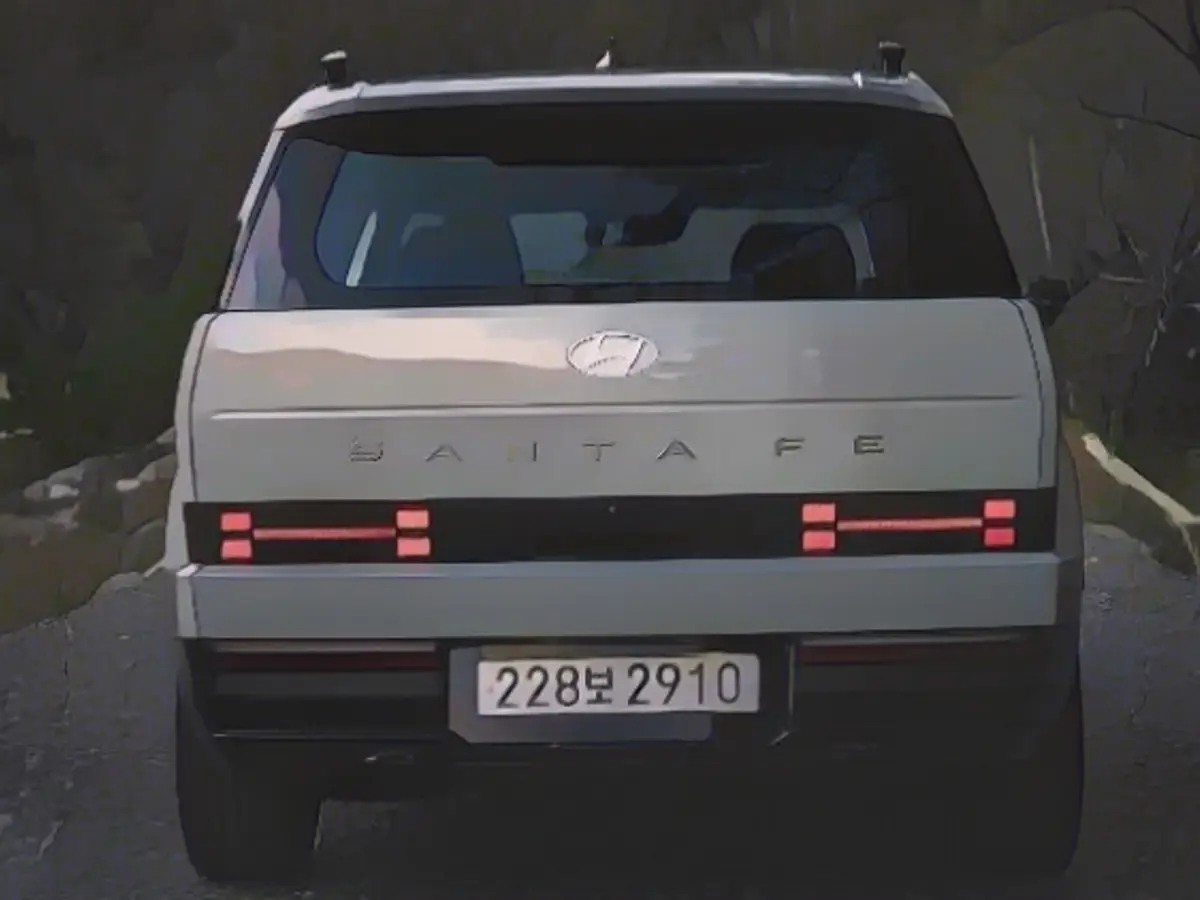
In contrast to some diesels, this engine duo does not have any starting weaknesses or interruptions in tractive power. This will probably also be the case with the plug-in versions, whose technical layout is the same except for the larger battery. However, the cable should largely correspond to that of the predecessor. From this, one must conclude that the engineers are not even fully convinced of the PHEV, otherwise it would have been optimized in important points such as charging performance and range.
More electric range than the current 70 kilometers (with a battery capacity of just under 14 kWh) would be quite good in order to actually make combustion-free driving possible more often in practice. Because if the electricity is used up quickly, some users may not want to charge at all (which is often perceived as annoying), preferring instead to drive hybrid.

Incidentally, the Santa Fe can hardly deny its throaty four-cylinder engine in the upper rev range. And it's a bit of a shame that the company doesn't at least provide a six-cylinder hybrid for a car of this caliber, which would be befitting. Of course, the premium competition in Germany would not collapse as a result, but the Koreans could give it a pinprick.
One could also philosophize about why Hyundai doesn't offer the German market a pure combustion version. The 2.5-liter turbo is certainly a lot of fun with its irrepressible forward thrust (281 hp). Just not as a front-wheel drive model, because then it will scrabble helplessly with the wheels when the power is fully applied. Exhaust emissions and CO2 will throw a spanner in the works for the Europeans. And as the European versions will soon be examined separately with regard to their drive systems, we can now relax and concentrate on the remaining capabilities of the Santa Fe.
Traveling splendidly in the Santa Fe

And they are at least quite suitable for traveling. The set-up of the supple chassis may change slightly for Europe, but it is obvious that the Santa Fe will never become a sports car. On the other hand, no changes are to be expected in the admittedly quite spacious interior. In any case, the vehicle width of 1.90 meters dispels any concerns that the passengers on the right and left sides could get too close to each other.
The fact that there is plenty of knee room in the second row and still acceptable space in the third row is evidence of clever packaging, because at 2.82 meters between the two axles, this Korean is not necessarily a wheelbase giant. To use the entire rear compartment for luggage, the backrests can be folded down to create a flat floor - the exact trunk volume is yet to be communicated.
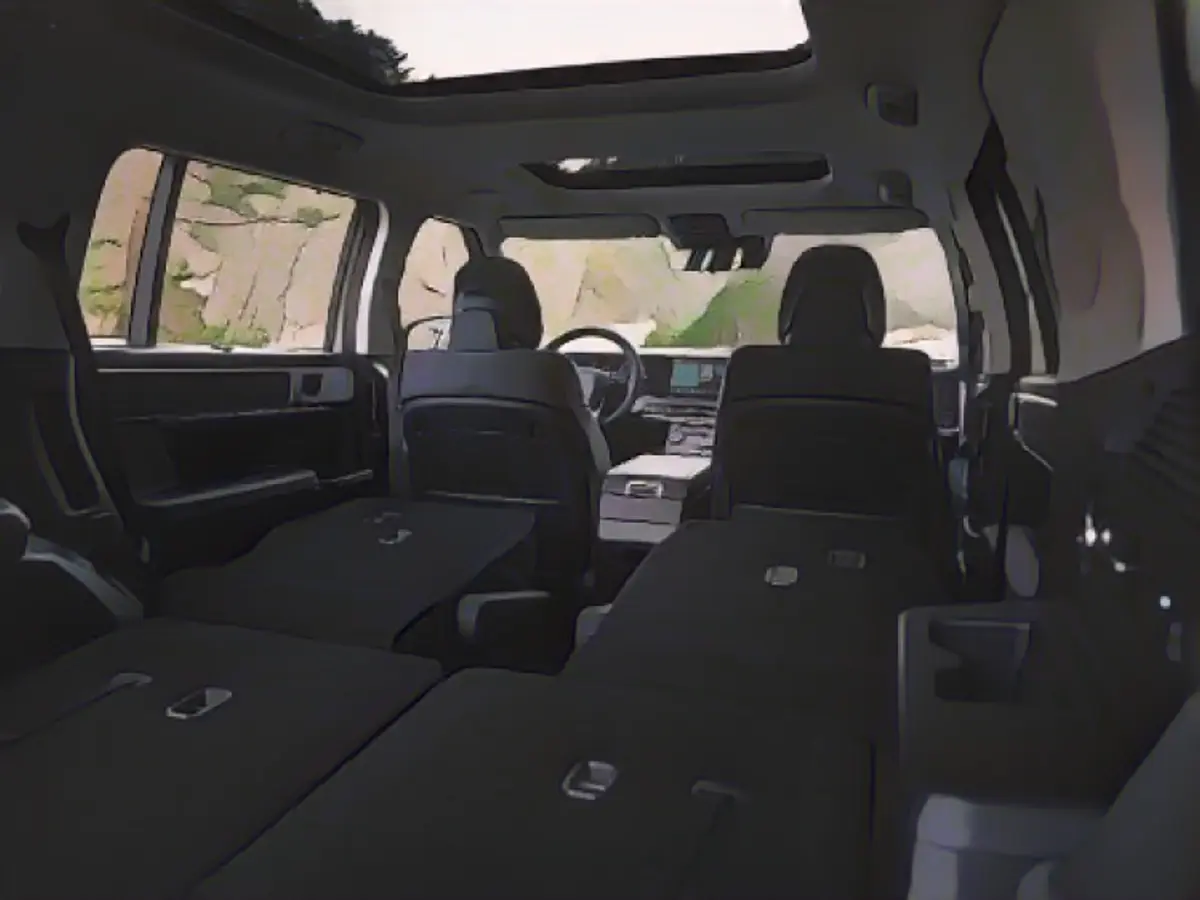
Supple upholstery plays its part in making long journeys as comfortable as possible. The single-seat version with six seats is particularly comfortable. Luxurious features such as electric adjustment in the rear plus an innovative relaxation mode enhance the sense of well-being on board.
A host of different gimmicks also make the large Korean attractive and useful. Whether it's the six-inch touchscreen in the center console for the sole purpose of operating the automatic climate control. Or the fact that the Hyundai can now be unlocked using a smartphone instead of a key. Or the double inductive charging cradle for two smartphones. Or the many USB ports distributed throughout the car. Or a compartment for disinfecting small items (glasses case or smartphone) with UV light. Or the center console box that opens in two directions. Or, or, or, or. And there are many comfort and safety assistants anyway.
Of course, assisted driving on the highway is right at the top of the list. Of course, the system brakes down to a standstill and also assists when changing lanes. But it is also true that many drivers are skeptical about certain assistance systems. It is good that the Group is aware of this fact and has made it pleasantly easy to switch off the lane vibration, for example: All you have to do is press and hold the corresponding button on the steering wheel.
If the next car is to be a proper SUV that is explicitly not purely electric, the Santa Fe would be worth considering. You can think about whether to choose a competitor's product for quite a while yet. After all, Hyundai has announced the designer SUV for the first half of next year. And after all, other manufacturers also have beautiful cars. Even quite stylish ones. You only need to look around the Hyundai-Kia group to see this. However, the Santa Fe is not a bad offer. Above all, it is spacious and comfortable. But perhaps not a cheap one, as the previous Santa Fe Hybrid started at just under 57,000 euros.
Hyundai has a variety of SUV models in its range, including the fifth generation of the Santa Fe, which is known for its radical design change. This new model stands out with its stylish and angular appearance, flared wheel arches, and LED lights with a distinctive "H" signature.
The Koreans have been praised for their pleasing, but not very exciting designs in the past, especially with the Santa Fe. However, with this new generation, Hyundai aims to make a strong impact in the market, positioning itself among top designers and introducing a more futuristic and eye-catching look.
Source: www.ntv.de
